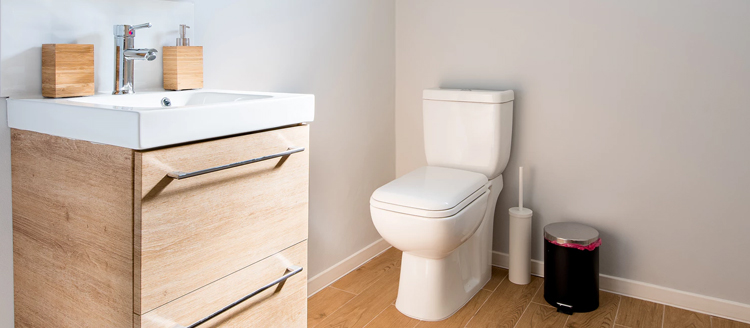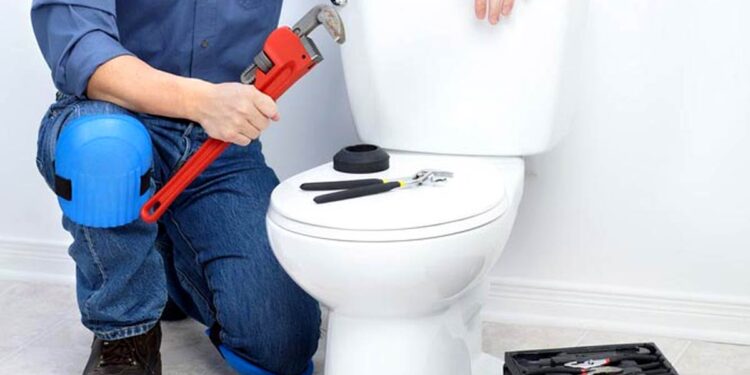It’s an ordinary day like any other day. You head to the toilet to go about your business and you hit the flush button. Suddenly, you discover the toilet isn’t flushing! You watch in horror as the water stays in the bowl instead of going down the way it should. The water level is rising and rising until it threatens to nearly spill over.
There you are, frantically praying that your toilet isn’t going to overflow. A clogged toilet is nothing new. Often, that is one of the most common reasons why your toilet won’t flush. If that is the case, it’s an easy fix with a plunger. But what if there are other reasons that could be causing your toilet to act up?
Why Is My Toilet Acting Up?
There could be several reasons why your toilet isn’t flushing the way that it should. It could be problems with the bowl if the water keeps swirling but never really going down. There could also be problems with your water tank. Perhaps the fill or the flush valve isn’t working properly.
Either way, your best bet is to contact a plumber for help. If you have some repairing experience, it might cross your mind whether you can fix the issue yourself. Luckily, there are a few simple DIY tricks you can try before you resort to ringing the plumber.
What Type of Water Do You Have?
Is your toilet bowl experiencing hard water build-up? One way to tell is by looking at your shower head. Is there a white powdery substance that always seems to crop up several times after you’ve cleaned it? That is calcium and magnesium build-up.

If this calcium and magnesium build-up is in your shower system, you can bet it is in your toilet system too. The problem with hard water is that it encourages scale build-up and it ends up coating your toilet bowl. The only way to try and get your toilet working again is to give this a clean. Alternatively, you could opt for an anti-scale device or perhaps a water filtration system.
How’s Your Siphon Jet?
Your siphon jet could be causing your toilet to act up and not flush properly. Again, this is a problem that is associated with hard water. The way to clean this is to put on a rubber glove. Then, stick your finger down the siphon jet to see if you can push out any of that magnesium and calcium build-up.
If you can break that up, it will clear the pathway for water to flow smoothly and hopefully fix your flushing issue. Another thing you could do is remove the lid of your toilet and look for the overflow tube. Pour some vinegar down the tube (about half a gallon) and let it sit for a little bit. The vinegar will break up the calcium and magnesium that are accumulated in there, flushing it out.
Is Your Flapper Getting Old?
The flapper in your toilet bowl is the device that allows the water to flow out of your tank and directly into your toilet bowl when you press the flush button. If your flapper is getting worn out after several years, it will not hold air the way it should.
Sometimes, the flapper doesn’t give you enough water to flush your toilet properly. Upon inspection, you also notice it’s pretty old. If so, it might be time to get that flapper replaced and get your problem fixed.
Is Your Fill Valve Working Like It Should?
If your fill valve is not working correctly, your toilet is not going to flush properly. Before you ring the plumber, always try to look inside your tank to check if something is not working correctly. The problem with your toilet could be something as simple as a fill valve that has stopped working like it should. If your fill valve has stopped working, a replacement should be able to fix your toilet woes.
How Old Is Your Toilet Bowl?
There are times when your toilet bowl stops working because of one very obvious problem. Your toilet is simply too old. If your toilet was built maybe ten or twenty years ago, then the flushing problem would boil down to something as simple as replacing your toilet altogether. If the toilet is far too old, it’s going to be difficult to get a high-efficiency flush out of your aging toilet system.
Yes, this may not be the ideal solution, but think of it this way. Would you rather spend a couple of hundred dollars buying the parts and trying to replace your toilet bit by bit? The more economical option could be to put that money toward a new toilet that will last you for another decade or two with no problems.





